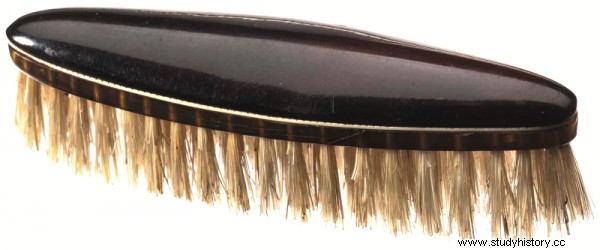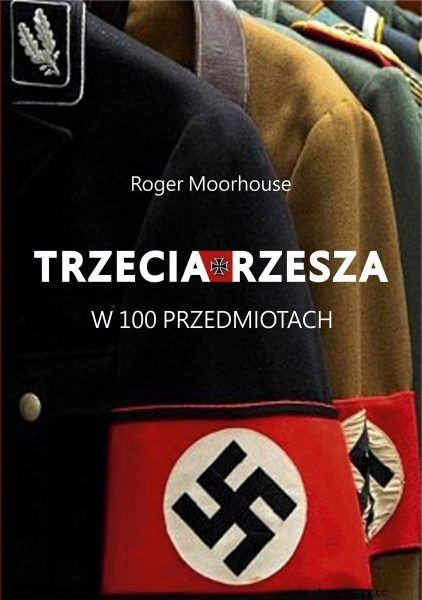A dark, neatly trimmed mustache next to the fringe and a swastika band on the arm were the hallmarks of the Fuhrer. Their care, however, required a lot of time and appropriate tools. How did Hitler deal with it?
In 1923, Ernst "Putzi" Hanfstaengl, Hitler's friend and confidant, tried to convince him to shave his mustache. He had long considered them pathetic fodder for caricaturists, and suggested to the Nazi leader that he should grow a goatee instead, which would give him masculinity. The future dictator completely rejected these suggestions and replied:“One day my mustache will be the last scream of fashion. You can be sure of it. " He was a bit right.
Care is essential
Hanfstaengl also argued that his friend shouldn't waste time constantly trimming and cultivating his facial hair. However, Hitler seems to have been well prepared for these activities.
This horn-rimmed one-inch toothbrush was taken from the bedroom in the dictator's apartment in Munich by his hostess, Anni Winter. People around the Führer recalled that he would take a beautician with him on every trip where he always placed the item shown below.
It is not known when exactly Hitler started wearing a mustache, which became his trademark. During World War I, he preferred the slightly more sumptuous Kaiser-style stubble.
Some say he shortened it for the first time so that the gas mask fits better on his face. It sounds likely, but in the photos from the hospital in Pasewalk in October 1918, this change in appearance is not visible, so it must have occurred after the war.

This brush was used by Hitler to care for his iconic facial hair.
Beard "for Hitler"
The toothbrush mustache was certainly fashionable in the 1920s and was popularized primarily by Charlie Chaplin . This may come as a surprise to the modern reader, but Hitler already in the 1920s attached great importance to his image and put a lot of effort into refining it, with the help of the photographer Heinrich Hoffmann.
It's possible that choosing a new beard style was part of the process. It seems that the change was dictated not only by fashion, but also by practical reasons. As the future dictator said in an interview with a friend in Munich:“Imagine my face without a mustache! My nose is way too big. ”
Whatever was behind this decision, Hitler was right that his mustache would gain popularity, at least among his followers. In 1923, when Hanfstaengl tried to persuade his friend to change his beard style, Heinrich Himmler and Ernst Röhm were already wearing the same brush on their upper lip.

An interesting fact is a fragment of Roger Moorhouse's book "The Third Reich in 100 Objects", published by the Znak Horyzont publishing house.
In later years, followers of the Führer grew. Both ordinary Germans and members of the Nazi tops shaved at Hitler. These included the Gauleiters Julius Streicher, Erich Koch, and Josef Wagner; Generals Lothar Rendulic, Gotthard Heinrici and Heinrich von Vietinghoff; as well as high-ranking SS men such as Irmfried Eberl, Christian Wirth and Hitler's longtime friend Sepp Dietrich.
Many of them were certainly guided by more than fashion. It was both an act of political loyalty and a personal tribute to the Führer.
Source:
The above text originally appeared in Roger Moorhouse's book The Third Reich in 100 Objects , which was published by Znak Horyzont.
The title, illustrations with captions, boldface text, explanations in square brackets and subheadings come from the editors. The text has undergone some basic editing to introduce more frequent paragraph breaks.
